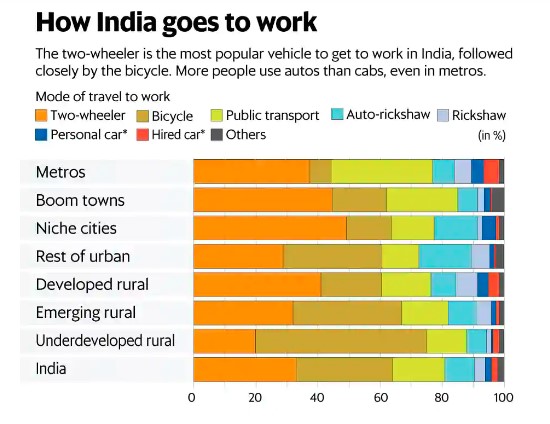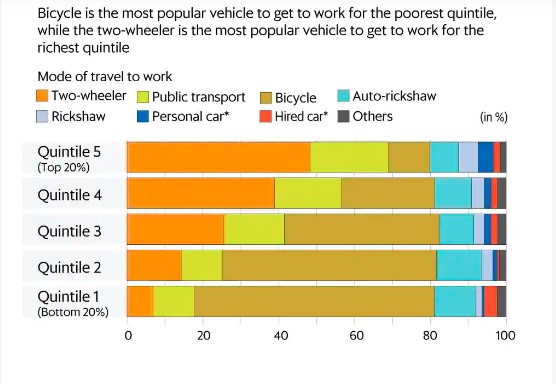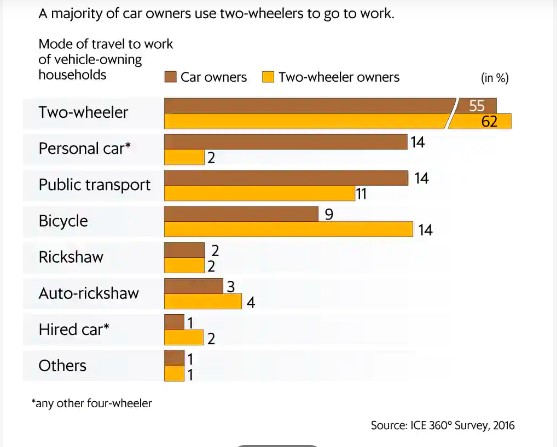How India goes to work
DownloadThis article was published on 12 Dec 2016.



In metros, 22% use a public bus and 11% use a local train (or metro) to reach work. The proportion of people using auto-rickshaws is higher than those using personal cars and higher than those using hired cabs to reach work in metros, the survey shows. Thirty-seven per cent of people in metros use two-wheelers to reach work, the data shows.
Even car owners seem to prefer using the two-wheeler while travelling to work, the survey suggests. The proportion of car owners who use their own car to travel to work is relatively lower, and is equal to the proportion of car owners who use public transport (bus, train, or metro) to reach work.
The ICE 360° survey was conducted by the independent not-for-profit organization, People Research on India’s Consumer Economy (PRICE), headed by two of India’s best-known consumer economy experts, Rama Bijapurkar and Rajesh Shukla. The survey is among the largest consumer economy surveys in the country.
The urban sample of the survey is comparable to that of the National Sample Survey Office (NSSO) consumer expenditure survey conducted in 2011-12. While the NSSO surveyed 101,651 households, of which 41,968 (41.3%) were urban households, the ICE 360° survey covered 61,000 households, of which 36,000 (59%) are urban households. The rural sample of the ICE 360° survey is less than half of the NSSO sample. Nonetheless, all the estimates of each region have been derived by adjusting for the respective population of those regions.